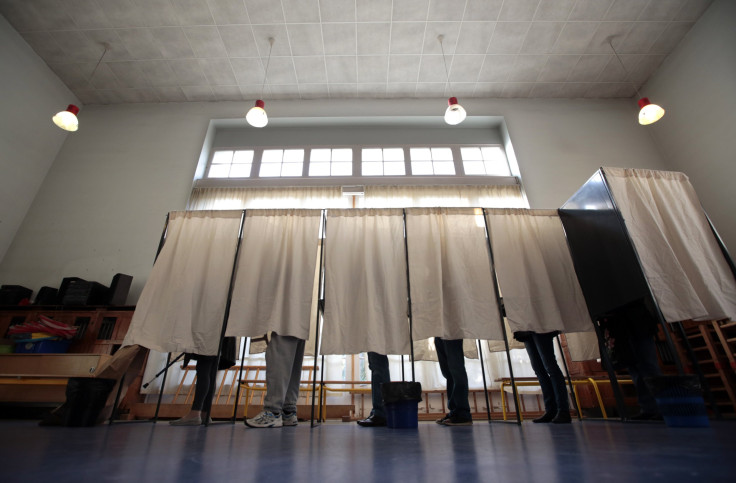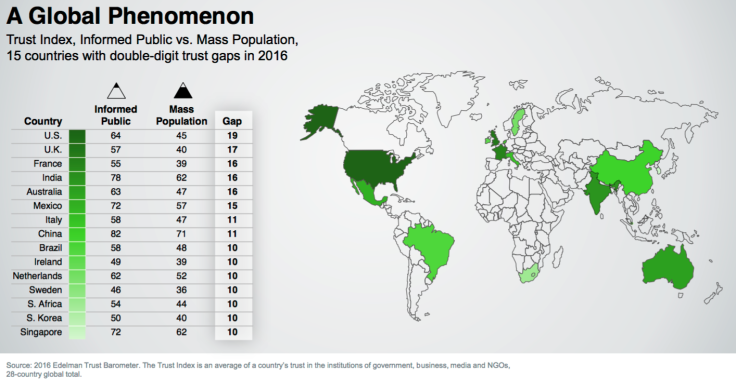Elite 'Informed Public' Trusts Companies And Institutions More Than General Global Population, Edelman Study Finds

There’s a gap of trust in government and other institutions growing between the “informed public” and the general populations of the world. The elite “informed public” puts more faith in the government, companies, media outlets and nongovernmental organizations than the mass population, according to a study conducted by public relations firm Edelman.
While trust has risen across all four institution categories, most of the growth has come from the “informed public,” or college-educated persons, who represent about 15 percent of the global population. On average the gap of trust in institutions between the two groups has grown to 12 percent, up from 10 percent last year.
About 60 percent of the informed group trusted in institutions to do the right thing, compared with 48 percent who held the same view in the mass population. The gap has especially grown when broken down by country, with some of the widest gaps in countries such as the U.S., with a 19 percentage point gap, the U.K., with a 17 percent gap, and France, with a 16 percent gap.

About 60 percent of high-income respondents trusted institutions to do the right thing, compared with 46 percent among low-income respondents. “It is my belief that the mass population is relying less on newspapers and magazines and, instead, chooses self-affirming online communities and television news,” Edelman CEO Richard Edelman wrote about the study. The widening gap of trust between the two groups is one possible way to explain the popularity behind the presidential campaign of businessman Donald Trump, he added.
The Edelman Trust Barometer study was conducted by Edelman Berland and consisted of 20-minute online interviews conducted between Oct. 13, 2015, and Nov. 16, 2015. The survey included two demographics in 28 countries. A narrower “informed public” group included 500 respondents in the U.S. and China, and 200 respondents in all other countries. The “mass population” consisted of the total respondents, minus the informed public group. As a whole, the two made up well over 33,000 respondents and about 1,150 respondents per country.
To qualify for the smaller group, respondents had to be between ages 25 and 64, college educated, at the top 25 percent of household income per age group in each country and frequently consume media and business news. The margin of error for the study was 0.6 percent for the general population and 1.2 percent for the informed public, according to Edelman.
© Copyright IBTimes 2024. All rights reserved.






















